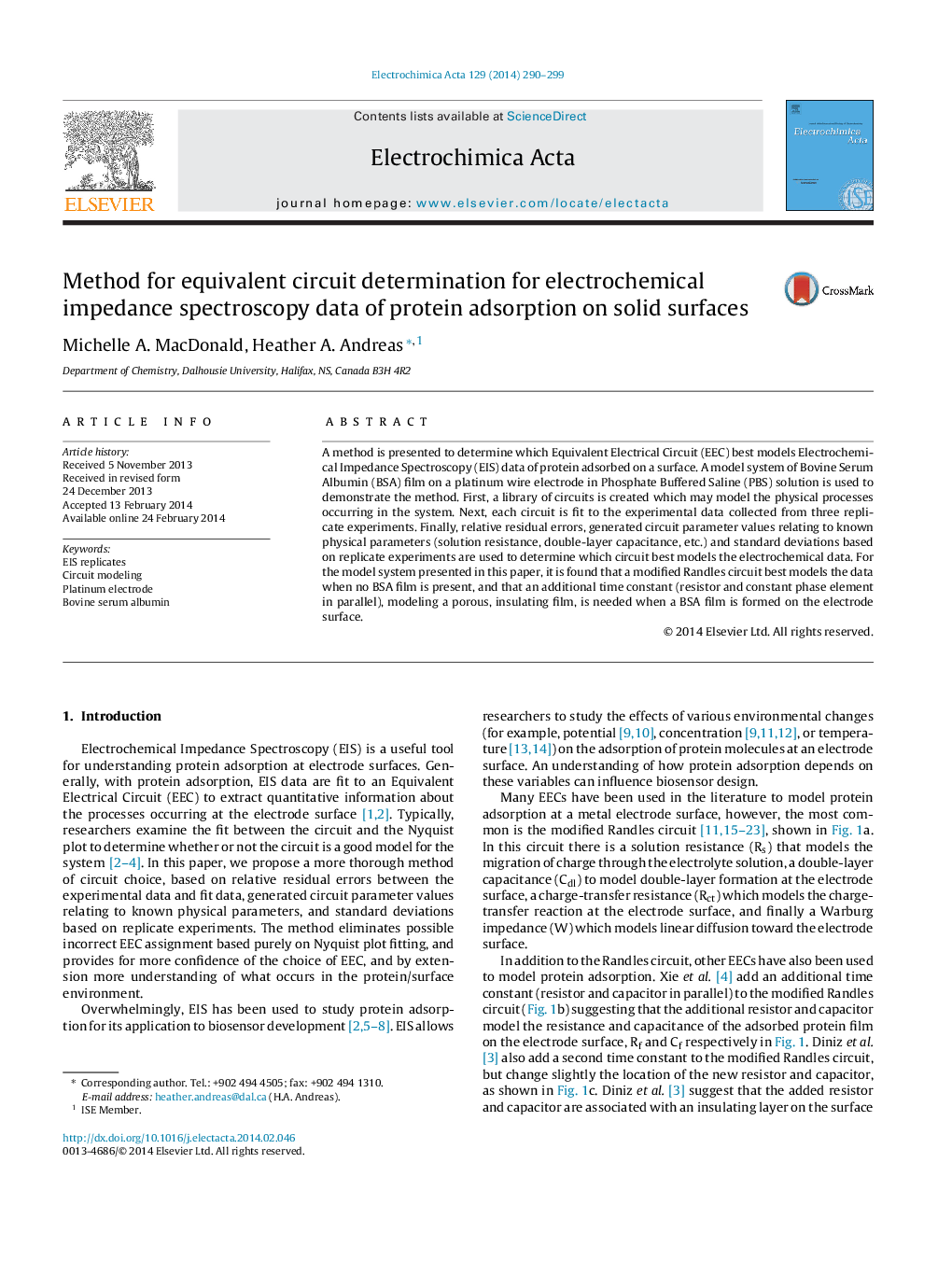| Article ID | Journal | Published Year | Pages | File Type |
|---|---|---|---|---|
| 185955 | Electrochimica Acta | 2014 | 10 Pages |
•New equivalent electrical circuit selection method for protein/surfaces.•Showing pitfalls in circuit choice related to Nyquist plot fitting.•Using residual errors and standard deviations improves confidence in circuit fit.•Comparison of all literature circuits for protein films and applied to model system.•Method shows Bovine Serum Albumin forms porous, insulating film.
A method is presented to determine which Equivalent Electrical Circuit (EEC) best models Electrochemical Impedance Spectroscopy (EIS) data of protein adsorbed on a surface. A model system of Bovine Serum Albumin (BSA) film on a platinum wire electrode in Phosphate Buffered Saline (PBS) solution is used to demonstrate the method. First, a library of circuits is created which may model the physical processes occurring in the system. Next, each circuit is fit to the experimental data collected from three replicate experiments. Finally, relative residual errors, generated circuit parameter values relating to known physical parameters (solution resistance, double-layer capacitance, etc.) and standard deviations based on replicate experiments are used to determine which circuit best models the electrochemical data. For the model system presented in this paper, it is found that a modified Randles circuit best models the data when no BSA film is present, and that an additional time constant (resistor and constant phase element in parallel), modeling a porous, insulating film, is needed when a BSA film is formed on the electrode surface.
